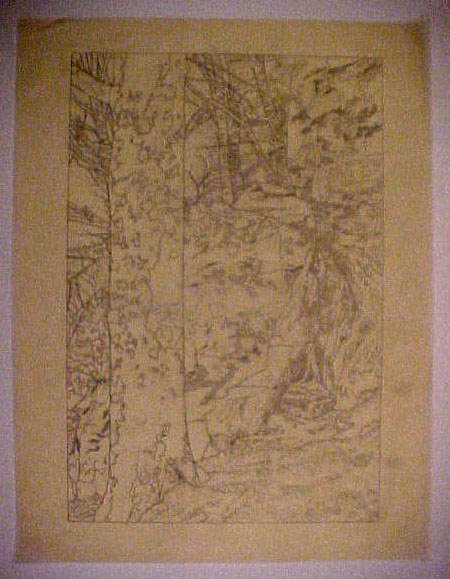|
First I want to have a clear idea of where I want to
have the dark and
light tones, so I print another line proof and paint washes on it in
black
watercolor, or ink.
This gives me a clear plan for putting these darks and
lights on the
plate. I usually create tones on the plate by using
aquatint.
Aquatint consists of dusting the plate with powdered rosin, then
heating
the rosin until it melts and sticks to the plate. It sticks
to the
plate in little dots, with open spaces between the dots where the metal
is exposed and therefore the etching fluid (which is blocked wherever a
dot of rosin is stuck to the metal) can etch around and between the
random
dots, which roughs up the surface of the copper and allows the plate,
now
with roughed places on the surface of it, to hold ink in tonal areas as
well as lines. The fluid eats more if you leave it in longer, so light
tones are made by letting the fluid etch short times and dark tones are
made by allowing the fluid to etch longer.
So, we etch aquatints on to the plate, making our best
guess about how
long to leave it in the etching fluid to get the shade of gray we
want.
That's what keeps etching interesting: you never really know what
you're
doing.
Having etched, we clean off the plate again and print
another proof.
|




